by Elisa Zied | Oct 23, 2021 | books, fiction, writer, writers, writing, young adult books
If you’re looking for an immersive, beautiful and expansive story about friendship (with romance), Laura Taylor Namey’s third novel, When We Were Them (Atheneum Books for Young Readers, November 16, 2021), more than fits the bill. Told over the course of one week and laced with rich memories and moments between three friends, the story is sure to resonate with teens and adult readers alike who have experienced or aspired to have deep, meaningful relationships.
Here’s a description of the novel from Taylor Namey’s website:
When they were fifteen, Willa, Luz, and Britton had a friendship that was everything.
When they were sixteen, they stood by one another no matter what.
When they were seventeen, they went through the worst.
And when they were eighteen, Willa ruined it all.
I had the pleasure of doing a Q & A with Taylor Namey, an author I’m also proud to call a friend since we met years ago at the SCBWI annual conference in Los Angeles. Here are the highlights from our email exchange.
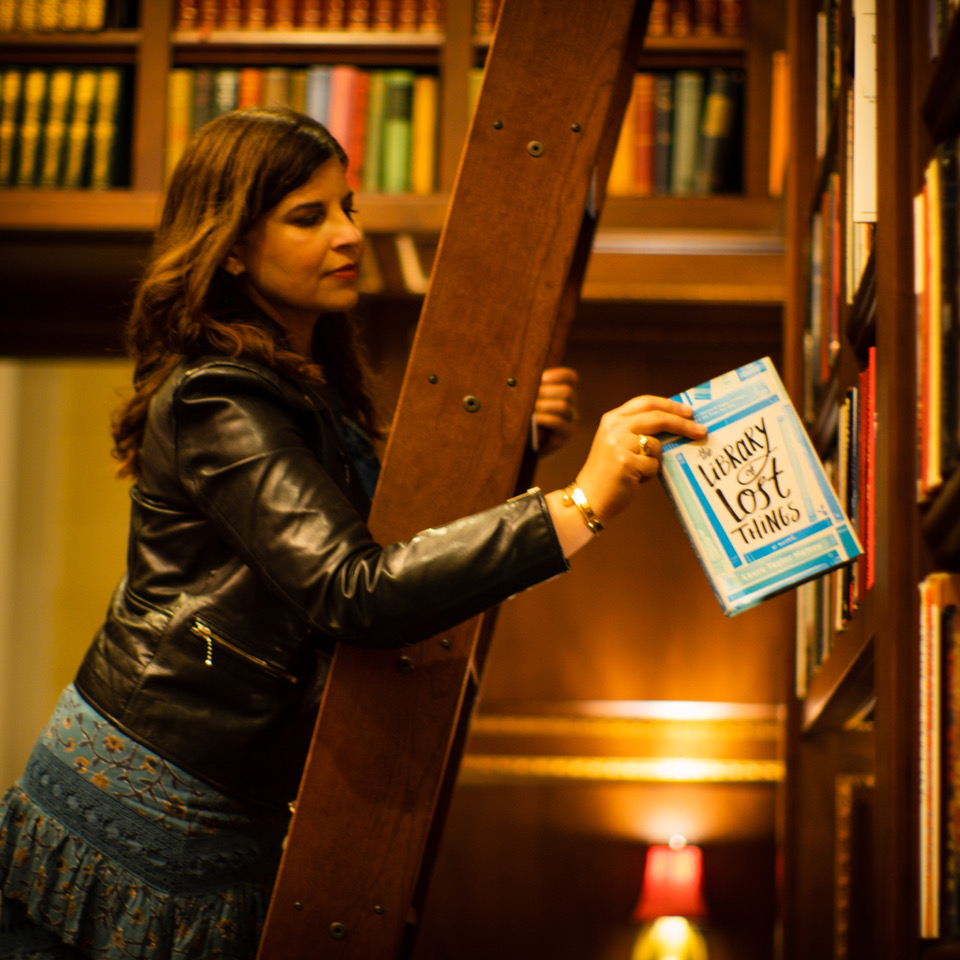 In what ways has your writing process and daily practice changed since writing your debut novel, The Library of Lost Things?
In what ways has your writing process and daily practice changed since writing your debut novel, The Library of Lost Things?
Now that my children are older, I definitely have more time to work in longer chunks, but my workload has increased ten-fold. I think what has changed the most is having to adapt to various seasons. My day looks much different when I’m actively drafting to other times when I’m focusing mainly on promotion or editing. My new motto is a combination of a day-by-day mentality as well as completing new tasks as quickly as I can, so they don’t pile up.
What was the spark for your latest novel, When We Were Them, and what made you want to explore female friendship?
After writing two coming of age YA novels with heavy romance subplots, I wanted to stretch my wings a little and try something different. WHEN WE WERE THEM is my most complex work to date, but I felt ready for a challenge. Having a brilliant editor who knew how to push and bring out my best made all the difference.
While A Cuban Girl’s Guide to Tea and Tomorrow is a tribute to my Cuban family, WHEN WE WERE THEM is an ode to my California beach girl childhood. I set the novel in the small community where I grew up. As a teen, my female friends and those relationships were so crucial to my identity and development. I wanted to celebrate a ride or die friendship between three teen girls, but also explore the way grief and loss and growing up can affect relationship, as well as the fallout that ensues when one girl leans too hard on the others. The novel asks the question, is everything they were strong enough to survive everything they’ve become?
While all of WWWT comes from you, which specific parts of which characters are most like or drawn from your family and friendships (childhood and/or current)?
These three characters and their friendship contain bits of me, in contrast to the character of Lila Reyes from A Cuban Girl’s Guide to Tea and Tomorrow. She embodies most me as a teen. Future opera star Britton shares my love of music, and Luz’s obsession with the heart and the human body and medicine is a tribute to my father who passed away from heart disease. Willa’s surfer girl and ocean loving spirit comes right from my childhood. I grew up on the beach featured on the cover.
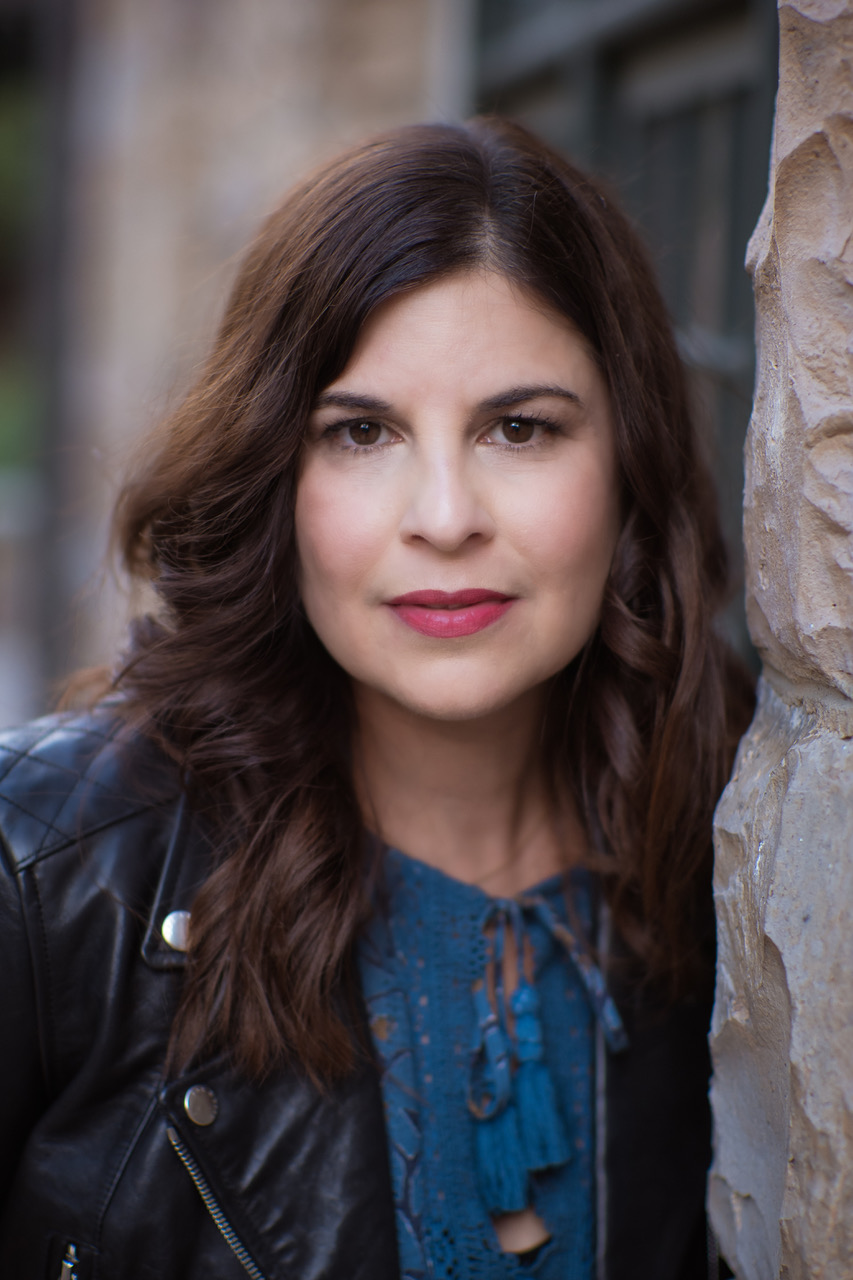 You dive deep into the ocean (pun intended), medicine, opera, becoming a Navy SEAL, and so much more in your novel. What did you know about each of these ahead of time, and what kind of research did you have to do before/while writing WWWT?
You dive deep into the ocean (pun intended), medicine, opera, becoming a Navy SEAL, and so much more in your novel. What did you know about each of these ahead of time, and what kind of research did you have to do before/while writing WWWT?
I knew very little about each of these aspects of my book, beyond surface level, before I started researching. Growing up in San Diego, I was familiar with Navy SEALs, used to live next door to a former SEAL. But it took interviews with active military personnel and a lot of reading to educate myself well enough to be able to include this experience in my story. The rest just took time and study, and a lot of YouTube watching. I particularly enjoyed watching hours of opera masterclasses and teaching sessions filmed at universities. Opera is such a gorgeous art form and it was a privilege to include a bit of this rep in my story.
You seem to be a master of juggling book drafting and revision as well as book promotion. What’s your typical schedule (or secret)?
Thank you! When I’m in a drafting or promotion season, or lately, both at once, I work between eight and ten hours a day. I draft in short 45-minute increments, spending the last fifteen minutes of every hour answering emails, prepping material for workshops, or maintaining my social media accounts. After dinner, I’m usually reading or working on my critique partners’ work. I’ve tried to be better about taking weekends off, but the month before a new book comes out, I typically have to spend a few weekend hours catching up. Despite the long hours, there is nothing I’d rather be doing.
Anyone who knows you knows how connected you are to your two critique partners. How has that relationship evolved and grown as you’ve all moved from pre-published writers to agented and/or published authors?
Now that the three of us have worked on multiple projects over the last three and a half years, I feel we’re better equipped to provide support, developmental feedback, and pinpoint editing within our workspace. We are the best of friends and mutual cheerleaders, and we trust each other implicitly. I am so lucky to have them.
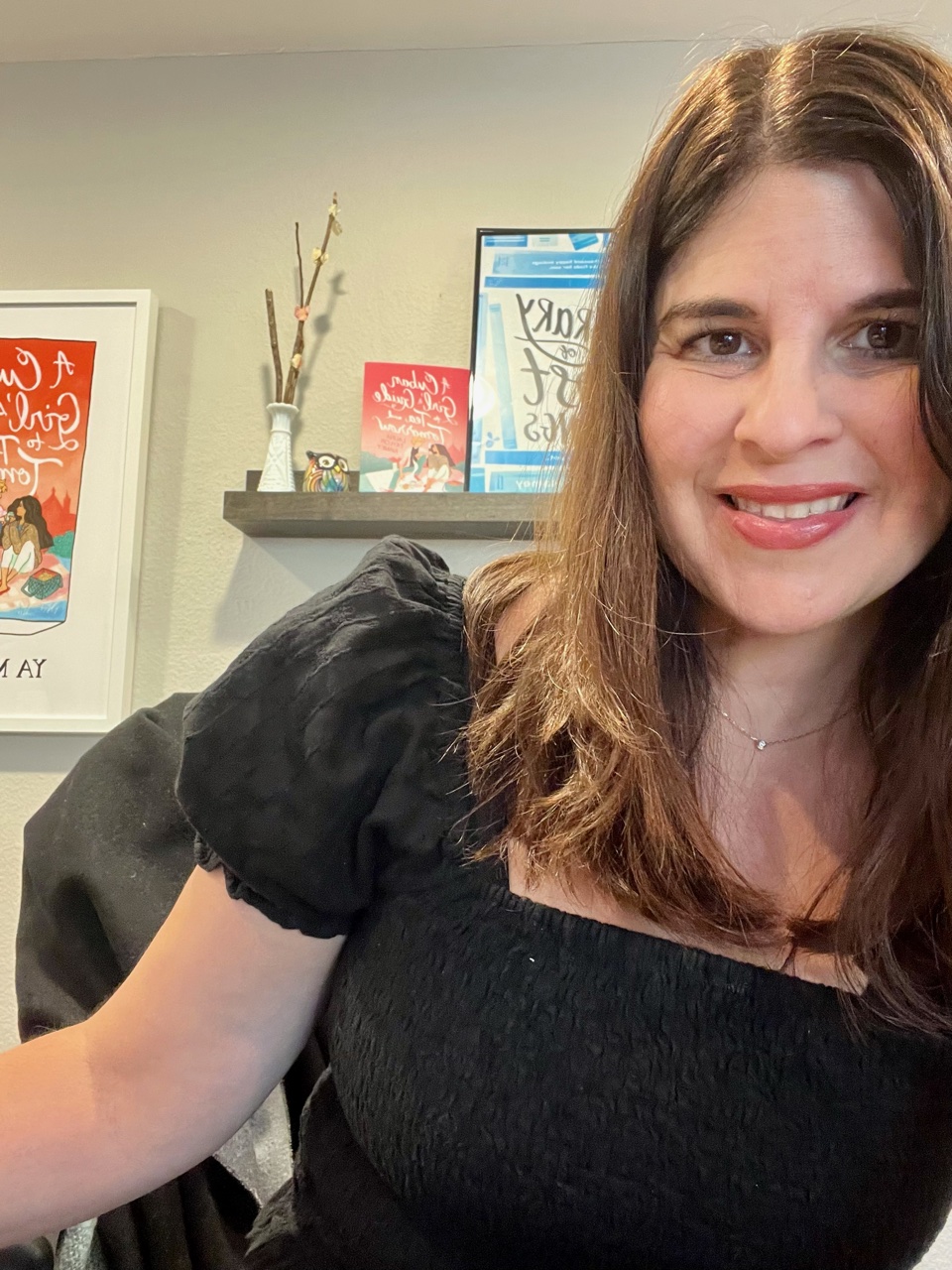 What was the best part about having your sophomore novel, A Cuban Girl’s Guide to Tea and Tomorrow, become a Reese’s YA Book Club pick—and a New York Times bestseller?
What was the best part about having your sophomore novel, A Cuban Girl’s Guide to Tea and Tomorrow, become a Reese’s YA Book Club pick—and a New York Times bestseller?
Being chosen for Reese’s Book Club has truly been one of the highlights of my career. The entire team is wonderful and so supportive, and the club works like a big family. I love being able to share my book across a wider platform and audience.
What has been the most challenging aspect of publishing three books in two years? And what have you learned about yourself as a writer (and a person) during that time?
Having to juggle multiple projects at once has been hard. Setting aside a draft to work on another book that might be in a different stage can be tricky. Now, I’m used to it. I’ve learned that I have a unique process that works for me and my writing style. And I’ve learned how much I truly love this job. The work is hard and long and taxing at times, but it is the only work I want to be doing.
What are some tips you have for aspiring writers to help them find ideas/inspiration for stories they’re meant to tell?
The world and the people you meet simply by living your life can provide so much inspiration. I’m also a fan of combining story ideas. The memory of a high school friend, plus a sparkling event three years ago, plus a curious letter or single line overheard at a café can be combined to create a thrilling new story. Also, ideas breed other ideas if you give them space. Jotting notes about story tidbits can unleash your creativity and many times, your mind will expand the scope of a few loose ideas into a novel worthy premise and a compelling tale.
Please share a favorite prompt or two for writers to help them get started on a new idea, or to get to know their characters better (especially those like me who are doing Nanowrimo in November).
My favorite exercise to get to know my character better is a long check list that I fiddle with before I start my book. Here is an abridged version. You should be able to answer these questions in your character’s voice.
I want most to:
I could have that except:
I am thrilled by:
I am inspired by:
I am terrified by:
I am disgusted by:
I’m most centered when:
I’m most anxious when:
My personal style looks like:
Not counting my pets, or family members, if I could only save three objects in a fire, I’d choose:
What are some of your favorite recent reads, TV shows, films or songs/albums?
Some recent favorite reads are You’d Be Home Now by Kathleen Glasgow, People We Meet on Vacation by Emily Henry, and Our Way Back to Always by Nina Moreno.
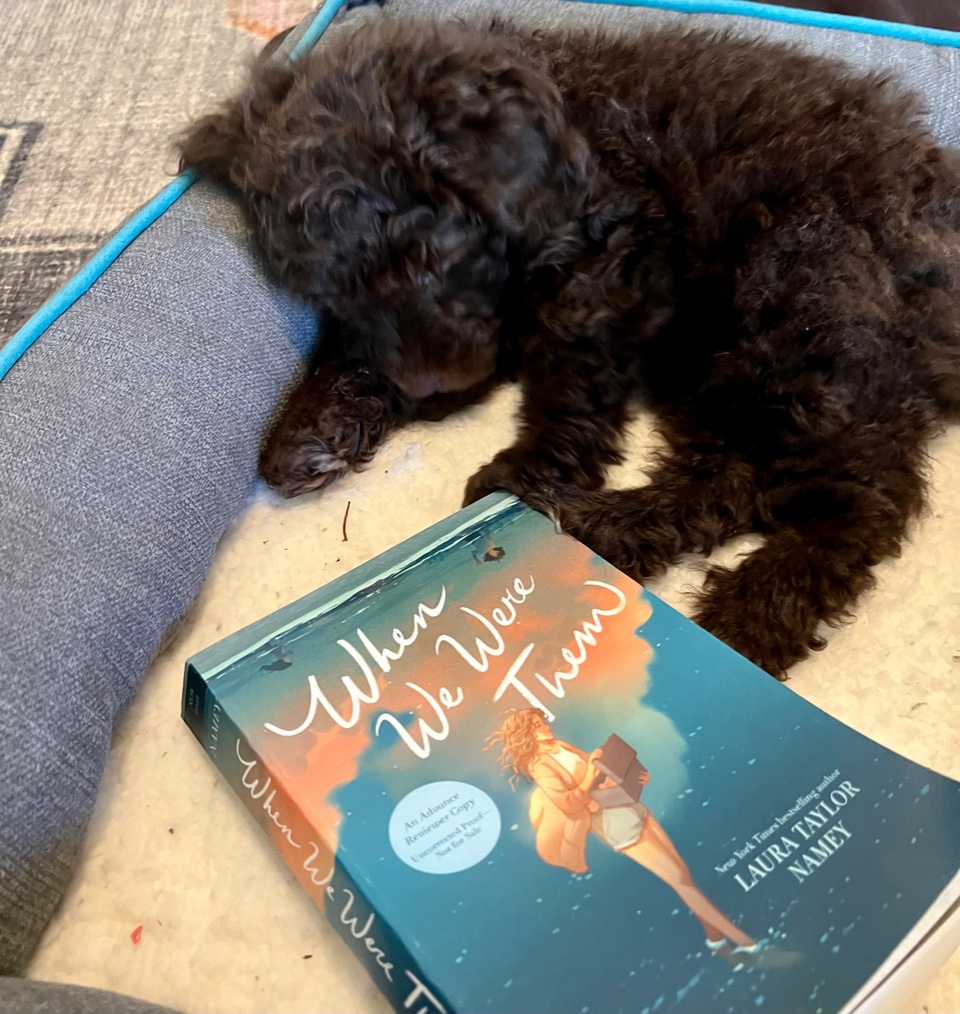
Professor Henry Higgins (aka Henry) is a big fan of his mother’s new novel!
Laura Taylor Namey is the New York Times bestselling author of Reese’s Book Club pick A Cuban Girl’s Guide to Tea and Tomorrow, The Library of Lost Things, and When We Were Them. A proud Cuban-American, she can be found hunting for vintage treasures and wishing she was in London or Paris. She lives in San Diego with her husband and two children. To learn more about Taylor Namey and all her work, visit her website here. You can order her books wherever books are sold, and check out her preorder campaign with Mysterious Galaxy Books in San Diego here.
by Elisa Zied | Sep 25, 2021 | books, fiction, writer, writers, writing, young adult books
You’d Be Home Now (Delacorte Press, September 28, 2021) is already a STAR. Kirkus calls the latest novel by bestselling author Kathleen Glasgow “A gut-wrenching look at how addiction affects a family and a town,” and “Necessary, important, honest, loving, and true.” Also praised by Booklist, and School Library Journal, this fantastic find according to Shondaland is at the top of my TBR list. I devoured Glasgow’s first two novels, Girl in Pieces and How to Make Friends with the Dark, and am especially excited for her latest work (which, for better or worse, makes me think of my own childhood). I have no doubt it will resonate with young adults and not so young readers alike. Here’s a brief description of You’d Be Home Now:
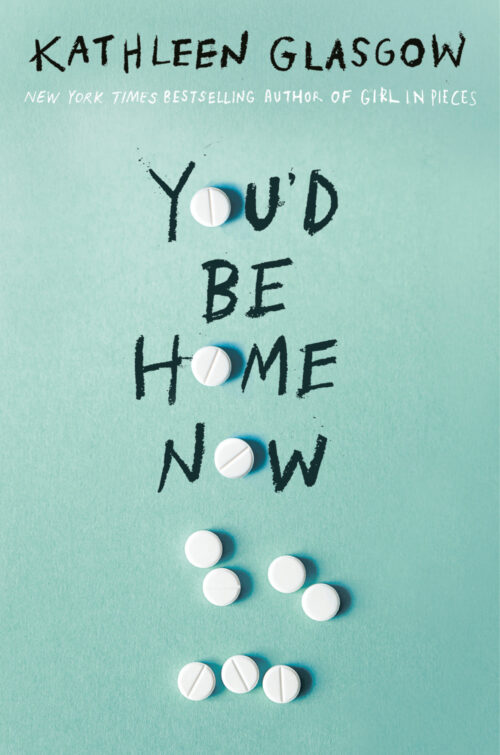 No one knew just how bad Joey Ward’s addiction was until the night Candy MontClaire died. Four months later, he’s back from rehab, hoping for a fresh start in a town that doesn’t know how to forgive. His sister, Emory, is tasked as his keeper. Because in a family with a “beautiful one” (her glamorous and outgoing older sister Maddie) and a “bad one” (Joey), Emmy has always been “the good one.” Of course she’ll keep her brother safe. She loves Joey more than anything. She’ll do anything to keep him alive.
No one knew just how bad Joey Ward’s addiction was until the night Candy MontClaire died. Four months later, he’s back from rehab, hoping for a fresh start in a town that doesn’t know how to forgive. His sister, Emory, is tasked as his keeper. Because in a family with a “beautiful one” (her glamorous and outgoing older sister Maddie) and a “bad one” (Joey), Emmy has always been “the good one.” Of course she’ll keep her brother safe. She loves Joey more than anything. She’ll do anything to keep him alive.
But what if love isn’t enough to save someone?
Glasgow was kind enough to do an email Q & A for my blog. Read on to learn more about her latest novel and her writing life.
What was the spark for You’d Be Home Now? And did you know from the get-go you wanted—or had to—write about a teen girl tasked with picking up the pieces after her brother’s drug addiction?
You’d Be Home Now was inspired by Thornton Wilder’s classic play, Our Town. It’s a loose reimagining of Grover’s Corners and what a town like that might be like today. If Wilder wrote the play today, I have no doubt the opioid crisis would be part of the plot, as this epidemic has ravaged families, towns, and communities. I chose to write the book from Emmy’s POV because there’s collateral damage in addiction: families, particularly siblings, who often become overlooked, overwhelmed, and exhausted in the face of a sibling’s addiction. The impact of addiction touches everyone in a family and really does a number on their mental health. They deserve a story, too.
I’m intrigued by the idea of examining who we are and what role we play within our families and our communities, and how that impacts our relationships and self-perception. I, for example, have always been a rule-follower who sought others’ approval, and who was always considered to be ‘the good one.” My older brother who was frequently in trouble was deemed “the bad one.” (We’ve been estranged for more than 15 years, and obviously haven’t worked through those narratives—maybe someday?!) What made you want to explore this idea in your novel, and did you have any revelations (in general or about your own life) along the way?
Everyone, for better or for worse, gets slotted into a role in a family: “the good one,” “the troubled one,” “the beautiful one,” “the difficult one.” It’s endless. But it’s not who each kid is, it’s who they are being defined as, and that’s not fair to any of them, because it makes them suppress emotions and not feel comfortable moving out of the role they’ve been assigned, if that makes sense. In YOU’D BE HOME NOW, Emmy is “the good one.” Quiet, rule-follower, caretaker of Joey since she was very small. In essence, because of this role, she’s never really discovered who she really is, or what she really wants out of life, or even how to get it. She doesn’t have an identity she forged on her own; it was given to her by her family. And of course, she wants to help her brother. But at what cost? She also wants to live a life of small, normal joys, like having a boyfriend, or going to dance. Those things make her feel guilty, though, because how can she enjoy herself while her brother’s life is disintegrating? I tried to be very careful in the book about Emmy’s journey with Joey, because she’s at the very beginning of this struggle with Joey, and many people (especially older readers) have reached a sort of end with the Joeys in their lives: they can no longer give all they’ve got; they’re exhausted. And that is valid! The question is learning to set your boundaries: what you can do, what you can’t do, because in the end, you also have to take care of yourself. It’s Emmy’s struggle in the book to realize this. I wanted to show the process of taking care of yourself, too. And to stop assigning people roles that don’t actually define who they are.
How was the process of writing this third novel different from that for Girl in Pieces, and How to Make Friends with the Dark?
Well, it was very hard to write with Thornton Wilder in the room! But I eventually overcame that, because the story became its own. I would say writing this book was different because Girl in Pieces and How to Make Friends with the Dark are pure emotion—Charlie and Tiger’s POVs are very interior and heavy. I needed to make Emmy’s narrative somewhat less intense than my other books to stretch the story beyond Emmy and into the town and the school to show how the tentacles of addiction ensnare everyone, not just the person struggling with addiction. An Instagram poster in the book called Mis_Educated is a character in the book and through their posts, a reader also gets a chance to hear from kids in the town of Mill Haven (in the comment section) about what’s really happening and how they feel about their lives.
How has the pandemic changed your writing life in terms of practices and inspiration?
I don’t know if the pandemic has changed my writing practice or inspiration so much as it has changed me, slowly, over time. I’m already an introvert and being even more isolated during the pandemic led me back into a deep depression. I wasn’t writing at all for several months, actually, until a joke between me and fellow author Liz Lawson (The Lucky Ones) turned into . . . a book. I needed something fun and different, I needed something to look forward to every day, and so did Liz, and those Twitter DMs between us eventually turned into a mystery called The Agathas, which comes out May 2022. Writing that book quietly with Liz, with no one watching (we didn’t tell our agents for a long time), really lifted me to a better place. And it’s a different tone of book for us, as both Liz and I tend toward heavier topics. We kept everything speedy, and fun, and about friendship (two teen girls become unlikely detectives and even more unlikely, become friends) and it was really a balm for me.
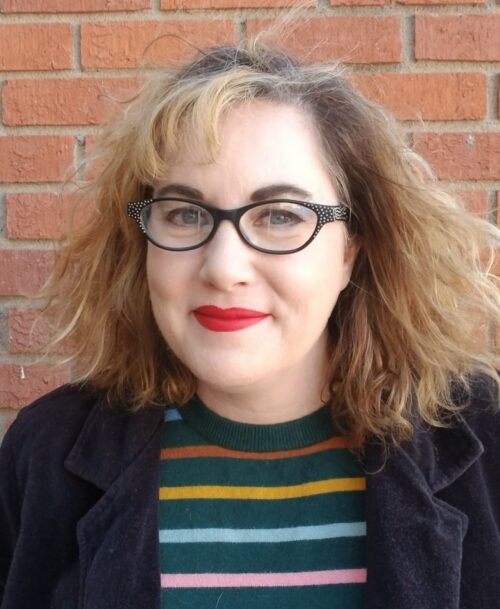 What has been the most rewarding part of being a young adult novelist? What has been the most challenging part?
What has been the most rewarding part of being a young adult novelist? What has been the most challenging part?
It’s rewarding in the sense that I hear every day from readers who have discovered Girl in Pieces and How to Make Friends with the Dark that those books have touched them deeply. I can’t really articulate what it means to know your book has impacted someone’s life in a deep and meaningful way. It makes me want to cry, actually! I’m grateful for that interaction. Writing is often hard and lonely, and sometimes you just don’t know if the story will land, especially with teens. I would say a challenging part is trying to do my best by teen readers and to articulate the adolescent experience in an authentic and believable way. And to give them a good and satisfying story to read.
What advice (in terms of craft or process) do you have for writers just starting out?
I don’t know if I’m an expert on anything having to do with writing, actually! I just try and write when I can, when a story keeps nudging me and won’t quit. I think in practical terms of craft, reading widely and often is the best teacher. You can learn from re-reading books you love: how the author structured this, how they handled that, how they went from A to B. I will say that you’ll learn what works for you in the beginning and then as you continue to write, you’ll improve through practice. I think the hardest thing for beginning writers is how to start. Like, literally, how to find time to sit in a chair (or couch, or bed, or coffee shop) and . . . get those first few words down. There’s a real fear: who am I to call myself a writer? Well, if you write, you’re a writer! And there’s a fear of: what if this isn’t any good? My answer to that is: what is good? One person might like your story, one might not. You can’t control that. But the most important thing to remember is, those things are abstract in the beginning: if you don’t sit down and write that story, no one will be able to read it. And believe me, someone wants to! Of that, I’m sure. We writers have a hard time getting out of our own way! We can imagine a million things might happen after we write a story and send it into the world, but if we don’t write it first, we will never know if any of those million things come to fruition.
What books, TV shows, and music have you most enjoyed during the pandemic (and more recently)?
I tend to have the television on in the background when I write and I wrote the entirety of You’d Be Home Now with Grey’s Anatomy on an endless loop. The shows I watched in the past two and half years when I WASN’T writing include (and I’m sorry on some of these because often it takes me years to watch a show everyone watched fifteen years ago): Game of Thrones, Mad Men, The Wilds, The Sopranos (could not finish, too many dream sequences), The Wire, 30 Rock, The Crown, Breaking Bad, Big Mouth, Forensic Files, Cold Cases, PEN15, Broadchurch. Some of my favorite books to read this past year were: The Lucky Ones (Liz Lawson); Never Saw You Coming (Erin Hahn); Something Happened to Ali Greenleaf (Hayley Krischer); When We Were Strangers (Alex Richards); That Weekend (Kara Thomas); The Project (Courtney Summers); Off the Record (Camryn Garrett). That’s just a small list. My music listening is all over the place, but lately I can’t stop listening to a song by Bright Eyes called “At the Bottom of Everything.” A weird thing about me is that while I don’t listen to music AS I write, I actually can’t start physically writing a book until I have everything in my head AND I have found the song that kind of drives the story, and “At the Bottom of Everything” is the song that drives what I hope will be my fifth book. (Girl in Pieces was “Kamera” by Wilco; How to Make Friends with the Dark was “Sign of the Times” by Harry Styles; You’d Be Home Now was “Let You Down,” by NF).
You’re a master storyteller, especially because you manage to inject hope into all of your stories no matter how raw, emotional, and painful they may have been to write or read. What’s one thing you’ve learned through your life and/or writing—especially during these especially challenging times—that has helped you persevere and continue to push through and make your art?
Honestly, I don’t know what else I would do if I couldn’t write. It’s all I’ve ever wanted to be, a writer. And stories are what keep us all going, right? When do we ever not need a good story?
About Kathleen Glasgow: She is the New York Times bestselling author of Girl in Pieces, How to Make Friends with the Dark, You’d Be Home Now, and the upcoming The Agathas (with Liz Lawson) (Delacorte, May 2022). She received her undergraduate degree from the University of New Mexico and her MFA from the University of Minnesota. She lives in Tucson, Arizona.
Check out my previous Q & A with Kathleen Glasgow for the launch of How to Make Friends in the Dark. And learn more about Glasgow and her work on her website. Her wonderful work is available wherever books are sold.
by Elisa Zied | Aug 22, 2021 | books, fiction
In 2019, I had the pleasure of doing a Q & A with novelist Laura Sibson about her writing life and beautiful debut novel, The Art of Breaking Things. A fan of hers and her wonderful work, I was excited to learn about her sophomore novel, Edie in Between (Viking Books for Young Readers, August 24, 2021). Here’s a description from Sibson’s website:
A modern-day Practical Magic about love, loss, and embracing the mystical.
It’s been one year since Edie’s mother died. But her ghost has never left.
According to her GG, it’s tradition that the dead of the Mitchell family linger with the living. It’s just as much a part of a Mitchell’s life as brewing healing remedies or talking to plants. But Edie, whose pain over losing her mother is still fresh, has no interest in her family’s legacy as local “witches.”
When her mother’s teenage journal tumbles into her life, her family’s mystical inheritance becomes once and for all too hard to ignore. It takes Edie on a scavenger hunt to find objects that once belonged to her mother, each one imbued with a different memory. Every time she touches one of these talismans, it whisks her to another entry inside the journal–where she watches her teenage mom mourn, love, and hope just as Edie herself is now doing.
But as Edie discovers, there’s a dark secret behind her family’s practice that she’s unwittingly released. She’ll have to embrace–and master–the magic she’s always rejected…before it consumes her.
Tinged with a sweet romance with the spellbinding Rhia, who works at the local occult shop, Edie in Between delivers all the cozy magic a budding young witch finding her way in the world needs.
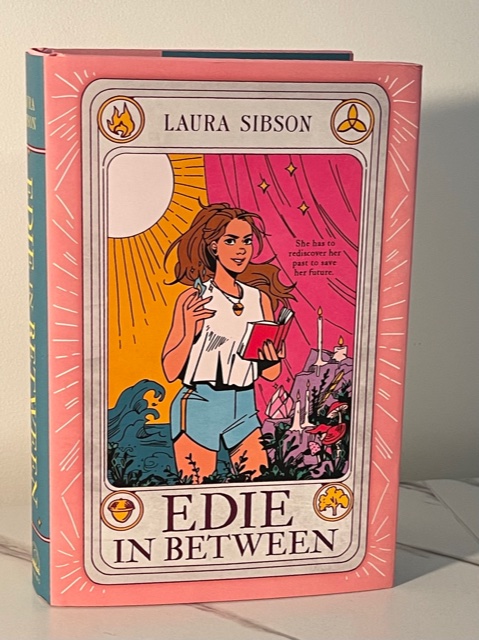 Sibson and I recently reconnected about her writing life and latest work. Here are the highlights.
Sibson and I recently reconnected about her writing life and latest work. Here are the highlights.
What has been the best part of becoming a published author with your debut novel, The Art of Breaking Things (Viking Books for Young Readers, 2019)?
The best part of being published is having the opportunity to interact with readers – either in real life at book events or through email – and hearing that your book affected them in some way. The other aspect of being published for which I’m very grateful is the doors it’s opened for me to lead workshops at The Highlights Foundation and to teach writing at the university level, both of which have been long-held dreams for me.
Was the process of writing your sophomore novel, Edie in Between, very different than that for your debut? If so, how?
The process of writing a second novel on deadline is night and day from the process of writing a first novel on your own schedule. For The Art of Breaking Things, I had years to work on the prose and the plot. I shared that manuscript with several trusted readers more than once. Edie In Between, on the other hand, was crafted through collaboration with my editor at Viking, Maggie Rosenthal. I threw some ideas at her, she came back and suggested I merge two of the ideas and the current version of Edie was born. I wrote a skinny first draft, then after receiving global revision notes from Maggie, threw out half of the draft and wrote even more. Maggie was instrumental in guiding me toward infusing the story with more magic and inspiring me to increase the stakes. I love the story that has resulted and I’m so grateful to work with an editor who has such a keen eye and is so skilled at her job.
I’m intrigued by the cover of Edie in Between. It’s so retro! Can you tell us the thought behind it?
The book is about a young witch who is reluctant to take on her power. In the book she meets a girl at an occult shop who reads tarot and helps Edie learn to wield (and accept) her magic. (Spoiler alert: there are sparks of attraction!) The design team wanted to pull in that tarot card sensibility for the cover, so they commissioned Lisa Sterle, who created the Modern Witch Tarot (among many amazing things) to create an image for the cover. And it’s perfect! While the book deals with parental loss, it’s also a fun story of friendship, magic, and adventure. This cover captures all those elements.
What personal experiences inspired this novel?
There are several elements in Edie In Between that stem from real life. First, the grief narrative was inspired many years ago when I wondered what it was like for my mother to have lost her father when she was just eighteen years old. That original story, which was my creative thesis at VCFA, was a contemporary realistic story of a girl who is navigating grief in an unusual way. The family name of the witches, Mitchell, is my mother-in-law’s maiden name. We lost her in 2014, so using that name is my way of paying tribute to her. Also, the setting of this final incarnation comes from my life. Cedar Branch is a fictionalized version of a place on the Chesapeake where I camped with my family when I was a kid. I have the best memories of crabbing and learning to paddle a canoe and swimming in the river. And finally, our younger child, who is 21, came out as transgender while I was drafting this story which inspired me to use Edie’s reluctance around magic as a metaphor for acceptance and claiming your full self.
How has the pandemic affected your reading/writing life?
I wrote like crazy while on deadline, but now that I don’t have an editorial deadline, I confess that diving into the drafting process has been more challenging than I’d like. As for reading, initially when the pandemic hit, it seemed that I couldn’t read anything longer than a news article. But I’ve gotten beyond that and have been reading a lot lately. Partly out of necessity. I’m teaching a college-level writing course this fall so I needed to read widely to select books to assign. (And there’s VCFA rep on that list! I’ve included Nora Carpenter’s Rural Voices Anthology as well as Varian Johnson’s Twins.) I’m also moderating a virtual YA rom-com panel for Salem Lit Fest in September, so I’m reading the panelists’ books as well.
As writers, we’re always studying, learning, and focusing on the craft of writing. How have you been able to maintain/guard your writing time while handling the rigors of the business (which includes engaging in social media, doing events, etc.)?
I find that it all comes in fits and starts. At the moment, I’m very focused on promoting Edie In Between so drafting my next novel is taking a back seat for a few weeks. But I’m also developing the syllabus for the course I’m teaching, and I do volunteer work as well. I find that the social media aspect of promoting a book could take up the entire day if you allow it. I set specific amounts of time for social media and then I use Freedom to limit access to those sites while I’m working on the course or the new writing project.
How do you generate ideas for future novels (if that’s something you are pursuing), and what do you do with those ideas once you have them?
When an idea lights upon me, maybe through a conversation with someone or a news story or walk in the woods, I’ll generally start writing what comes to mind to evaluate if the idea has legs. Many sparks don’t go anywhere. The ones that keep my interest or seem to have possibility, I’ll continue drafting as scenes come to me. Eventually, I get to a place where I need to stand back and see what I’ve got and figure out how to move forward. Usually is this around the 20k words mark. I’ll start to create a loose plot and keep going from there.
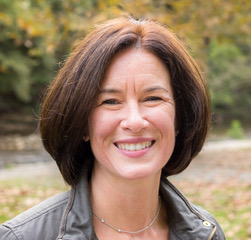 What’s your writing routine during drafting and/or revision?
What’s your writing routine during drafting and/or revision?
Now that meeting in coffee shops to write isn’t really feasible, I’m fortunate to have a room on the third floor of our old Victorian home where I can work. My desk is perched before a set of windows that look out over the big magnolia in our front yard. I usually put in some ear buds, make sure I’ve got plenty of fresh coffee, turn on the Freedom app and dive into the writing. Having said that, I can’t sit still for long periods of time, so I’ll get up to walk around every hour or two.
What writing tools/resources would you not want to live without?
Scrivener. I still believe that I would not be able to draft a novel without it. My brain gets overwhelmed when drafting in a word document, partly because I tend to draft out of order. I’ve also become increasingly reliant on my white board for plotting.
Any tips for aspiring novelists just getting started on their writing and/or publishing journey?
Finish the thing. That is the best advice I can give because it’s really all the advice wrapped up in one short sentence. Finish the thing means don’t give up on yourself or your story. It’s also intensely practical because you cannot query agents until you have a completed manuscript. Many, many people start, but never finish. You’ve got to finish if you want to be published.
What makes you want to keep writing?
To be frank, I don’t think I could not write at this point. I get grouchy and irritable when I’m not working on a new story. Even when the world of publishing feels tough and I wonder if I want to keep going, a character or a setting or a situation calls to me and back into the writing cave I go.
Check out reviews of Edie in Between by Kirkus and Publishers Weekly. You can also learn more about Laura and her work by visiting her website.
Edie in Between is available at AMAZON, BARNES & NOBLE, INDIEBOUND and BAM.
About Laura Sibson: After a career in undergraduate counseling, Laura Sibson pursued an MFA from Vermont College of Fine Arts. When she’s not writing in a local coffee shop, you can find her running the neighborhood streets or hiking with her dog. She lives in Philadelphia with her husband and their two sons. Laura is available for school visits, book clubs, workshops and conferences. She can speak on the process of writing and publishing to audiences from middle school into adulthood. With her background in one-on-one counseling, giving presentations and facilitating both panels and writing groups, Laura brings both warmth and professionalism to all of her endeavors.
by Elisa Zied | Sep 15, 2019 | books, fiction, writer, writers, writing, young adult books
Laura Taylor Namey is a woman on a mission. This dog loving, piano playing, former teacher is a mother of two and full time writer. She aspires to live in London someday, but right now is truly living the dream (and working her a** off) as the debut author of the brand new young adult novel, The Library of Lost Things (Inkyard Press, October 2019). Here’s a description of the novel from Goodreads:
From the moment she first learned to read, literary genius Darcy Wells has spent most of her time living in the worlds of her books. There, she can avoid the crushing reality of her mother’s hoarding and pretend her life is simply ordinary. But when a new property manager becomes more active in the upkeep of their apartment complex, the only home Darcy has ever known outside of her books suddenly hangs in the balance.
While Darcy is struggling to survive beneath the weight of her mother’s compulsive shopping, Asher Fleet, a former teen pilot with an unexpectedly shattered future, walks into the bookstore where she works…and straight into her heart. For the first time in her life, Darcy can’t seem to find the right words. Fairy tales are one thing, but real love makes her want to hide inside her carefully constructed ink-and-paper bomb shelter.
Still, after spending her whole life keeping people out, something about Asher makes Darcy want to open up. But securing her own happily-ever-after will mean she’ll need to stop hiding and start living her own truth—even if it’s messy.
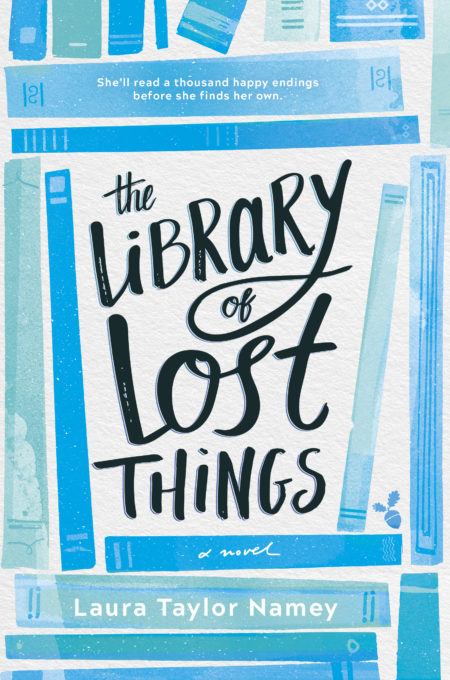 I had the pleasure of doing an email interview with my lovely friend whom I had the pleasure of meeting several years ago at a Society for Children’s Book Authors and Illustrators annual conference. Read on to learn about her writing journey and why she loves #pitchwars and her critique partners (not necessarily in that order).
I had the pleasure of doing an email interview with my lovely friend whom I had the pleasure of meeting several years ago at a Society for Children’s Book Authors and Illustrators annual conference. Read on to learn about her writing journey and why she loves #pitchwars and her critique partners (not necessarily in that order).
EZ: At what point in your life did you know you wanted to write for children and young adults? And when did you know you were a writer?
LTN: I have always felt like a natural writer, even if I didn’t have the logistics figured out until a few years ago. I am a former teacher, and I found myself using a lot of literature in my classroom lessons. I began to long for the chance to write my own stories. About five years ago, I started writing a young adult novel (this one will forever live in a drawer). I’d had no formal training, but I used that work to find out what I really did need to work on more. I got help, read a ton, and decided that I wanted to focus on the young adult age group. I love the emphasis on coming-of-age themes, high-concept storytelling, and exploring complex and relevant topics.
EZ: What has been the best part of transitioning from a pre-published to a published author?
LTN: I have such admiration and respect for career authors, and creators who consistently come up with beautiful and compelling content. Being able to take my small place beside them, with the word Published next to my name, is an incredible experience.
EZ: How do you fit writing into the rest of your life (and fit the rest of your life into your writing)?
LTN: I am blessed to have a supportive family, and the opportunity to write full time right now. I work best in the morning, so having a new teen driver in my home has helped to free up some of my time to build up my word count before lunch time. I take breaks to take care of my home and family, and to squeeze in a workout. Admittedly, I don’t watch a lot of TV. I am usually writing, or reading during down time.
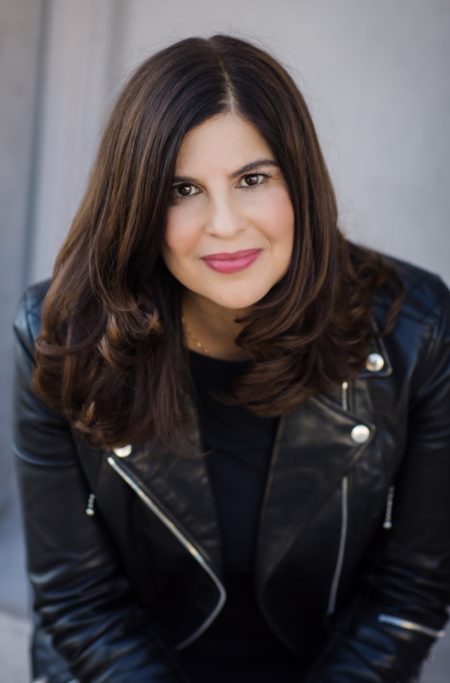 EZ: What are your favorite kinds of books to read, and how do they inspire your writing?
EZ: What are your favorite kinds of books to read, and how do they inspire your writing?
LTN: I love books that stick with me long after I’ve finished them. I enjoy a wide variety of authors, age groups, and genres. Make me care, feel, and want to chat about your book all day and that’s my idea of a winner. I believe all writers need to actively read other writers. I am most inspired by other authors in the areas of scope and opportunity. There are so many ways to attack and deconstruct even the same topic in drastically different ways with differing points of view. Reading more only confirms my belief that so many possibilities lay in front of our pens.
EZ: Can you describe your experience with #pitchwars on Twitter?
LTN: I was a 2017 #pitchwars unofficial mentee. Besides working with a fantastic mentor who became the first person to work on THE LIBRARY OF LOST THINGS, #pitchwars brought me into a supportive community of writers. This is the real prize in any online contest. Put your work out there. Meet fellow writers. Team up and share and hone your craft together, and know that you are not alone in your struggles and hopes.
EZ: You are a big fan of your critique partners. How did you meet them, and what makes your partnership work? What advice do you have for other writers who want to work with critique partners or groups?
LTN: I have two fantastic critique partners that work with me almost every day. We met because we were all 2017 #pitchwars unofficial mentees. We began chatting privately on Twitter DM, and became lifelong friends through sharing our work and supporting one another. What sets our group apart is that we don’t wait until we finish a novel to edit or weigh in. We are always working together on our three individual manuscripts. We plan together from idea-up, talk through issues, name towns or characters, and share snippets of our writing as we go. When I get stuck, I can ask a question directly from the point of concern. My partners already have such a deep knowledge of my manuscript, plot and theme, and character arcs, that they can weigh in quickly. And I do the same for their work.
For those who would like to join or form a group like this, hang out on private writer’s boards or the community groups associated with social media programs, such as #pitchwars. Put yourself out there. It might take some time, but you will find your people. It’s okay if you try out a CP and that person isn’t quite right for you. Keep sharing and investing in others.
How will you know if you are collaborating with the best people for you? Your perfect CPs will be similar enough to you and your work that they share a taste level and basic skill level. But they should be different enough that they can expand your scope and contribute to your growth. A good CP walks beside you, while also possessing the tools to push you. My CPs and I are the best of friends, but when it’s time to work, we give tough feedback with love.
EZ: What are you currently working on? And where do you see yourself in five years?
LTN: Right now I am almost finished with the draft of a secret junior novel. I’m hanging out in the young adult contemporary world for a while, and hope to have a few books side-by-side on shelves in five years.
To learn more about Laura Taylor Namey and The Library of Lost Things, visit her website. You can also find her on Twitter and on Instagram. Stay tuned for Namey’s sophomore novel, A Cuban Girl’s Guide to Sweaters and Stars (Simon & Schuster, Fall ’20) and future titles as well!
by Elisa Zied | May 11, 2019 | books, fiction
The Art of Breaking Things (Viking Books for Young Readers, June 2019) by debut author Laura Sibson tells the story of 17-year-old Skye, an artist set to leave her small town and attend art school once she figures out how to survive senior year and confront the trauma she experienced several years earlier. Here’s a brief description of the novel from Sibson’s website:
Weekends are for partying with friends while trying to survive the mindnumbingness that is high school. The countdown to graduation is on, and Skye has her sights set on escaping to art school and not looking back.
But her party-first-ask-questions-later lifestyle starts to crumble when her mom rekindles her romance with the man who betrayed Skye’s trust and boundaries when he was supposed to be protecting her. She was too young to understand what was happening at the time, but now she doesn’t know whether to run as far away from him as possible or give up her dreams to save her little sister. The only problem is that no one knows what he did to her. How can she reveal the secret she’s guarded for so long?
With the help of her best friend and the only boy she’s ever trusted, Skye might just find the courage she needs to let her art speak for her when she’s out of words. After years of hiding her past, she must become her own best ally.
(more…)
 In what ways has your writing process and daily practice changed since writing your debut novel, The Library of Lost Things?
In what ways has your writing process and daily practice changed since writing your debut novel, The Library of Lost Things? You dive deep into the ocean (pun intended), medicine, opera, becoming a Navy SEAL, and so much more in your novel. What did you know about each of these ahead of time, and what kind of research did you have to do before/while writing WWWT?
You dive deep into the ocean (pun intended), medicine, opera, becoming a Navy SEAL, and so much more in your novel. What did you know about each of these ahead of time, and what kind of research did you have to do before/while writing WWWT?  What was the best part about having your sophomore novel, A Cuban Girl’s Guide to Tea and Tomorrow, become a Reese’s YA Book Club pick—and a New York Times bestseller?
What was the best part about having your sophomore novel, A Cuban Girl’s Guide to Tea and Tomorrow, become a Reese’s YA Book Club pick—and a New York Times bestseller?
 No one knew just how bad Joey Ward’s addiction was until the night Candy MontClaire died. Four months later, he’s back from rehab, hoping for a fresh start in a town that doesn’t know how to forgive. His sister, Emory, is tasked as his keeper. Because in a family with a “beautiful one” (her glamorous and outgoing older sister Maddie) and a “bad one” (Joey), Emmy has always been “the good one.” Of course she’ll keep her brother safe. She loves Joey more than anything. She’ll do anything to keep him alive.
No one knew just how bad Joey Ward’s addiction was until the night Candy MontClaire died. Four months later, he’s back from rehab, hoping for a fresh start in a town that doesn’t know how to forgive. His sister, Emory, is tasked as his keeper. Because in a family with a “beautiful one” (her glamorous and outgoing older sister Maddie) and a “bad one” (Joey), Emmy has always been “the good one.” Of course she’ll keep her brother safe. She loves Joey more than anything. She’ll do anything to keep him alive. What has been the most rewarding part of being a young adult novelist? What has been the most challenging part?
What has been the most rewarding part of being a young adult novelist? What has been the most challenging part? Sibson and I recently reconnected about her writing life and latest work. Here are the highlights.
Sibson and I recently reconnected about her writing life and latest work. Here are the highlights. What’s your writing routine during drafting and/or revision?
What’s your writing routine during drafting and/or revision? I had the pleasure of doing an email interview with my lovely friend whom I had the pleasure of meeting several years ago at a
I had the pleasure of doing an email interview with my lovely friend whom I had the pleasure of meeting several years ago at a  EZ: What are your favorite kinds of books to read, and how do they inspire your writing?
EZ: What are your favorite kinds of books to read, and how do they inspire your writing?
Recent Comments